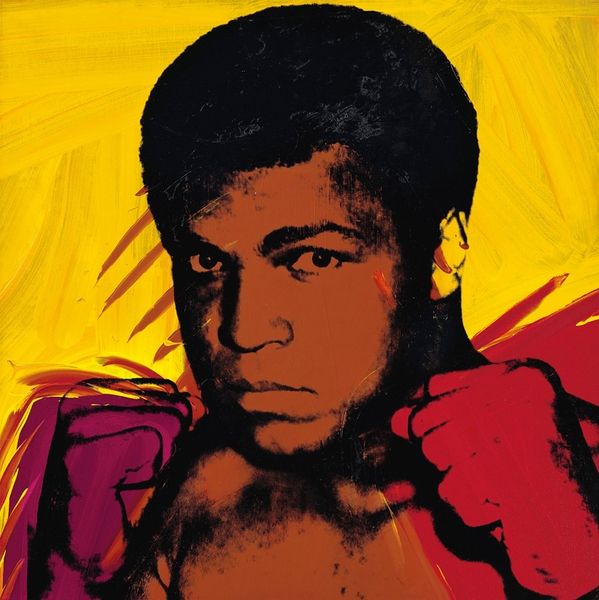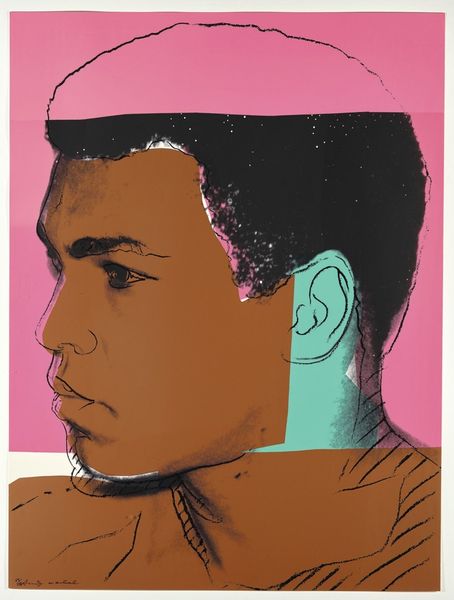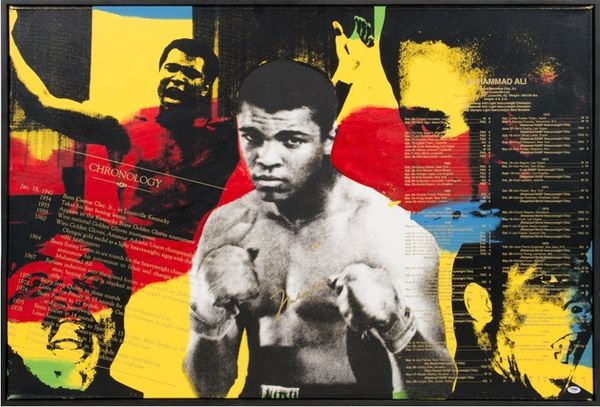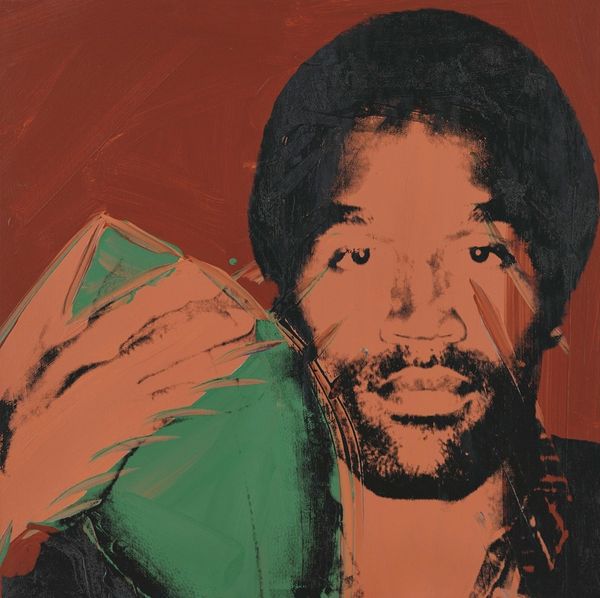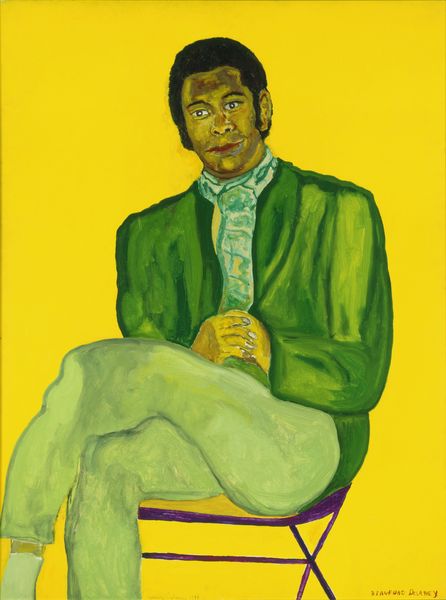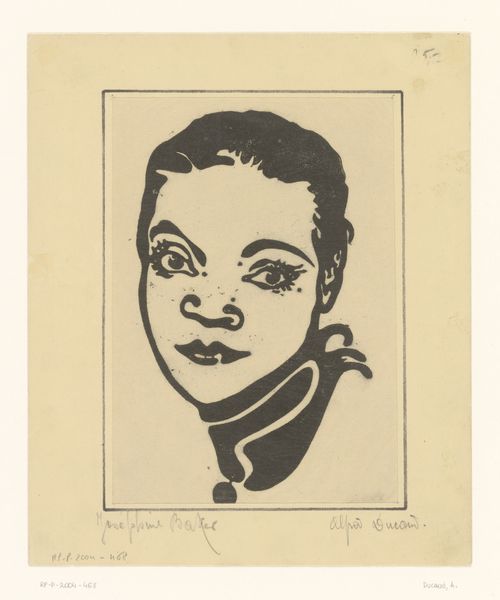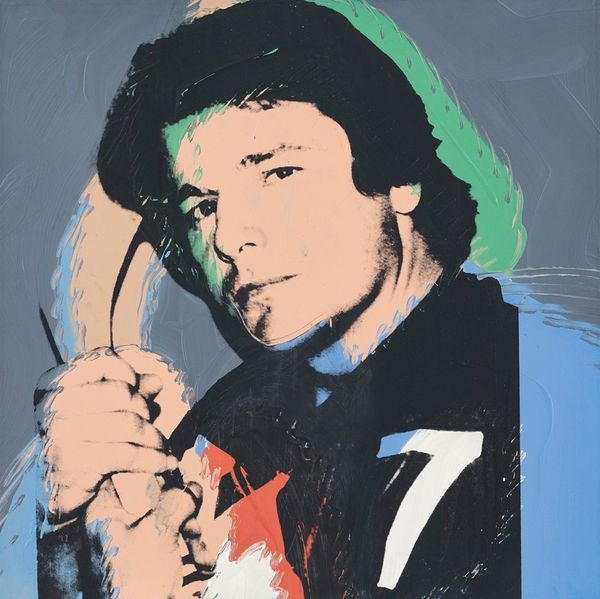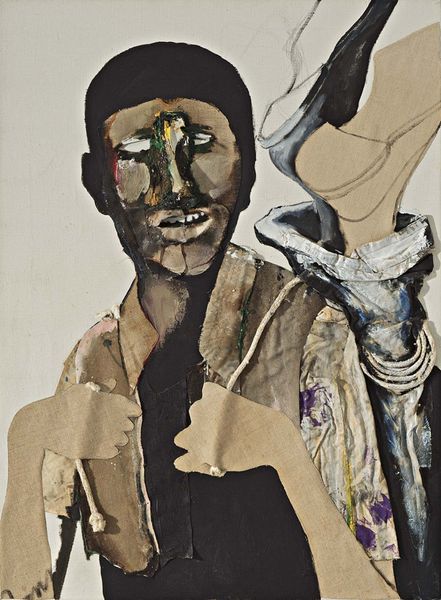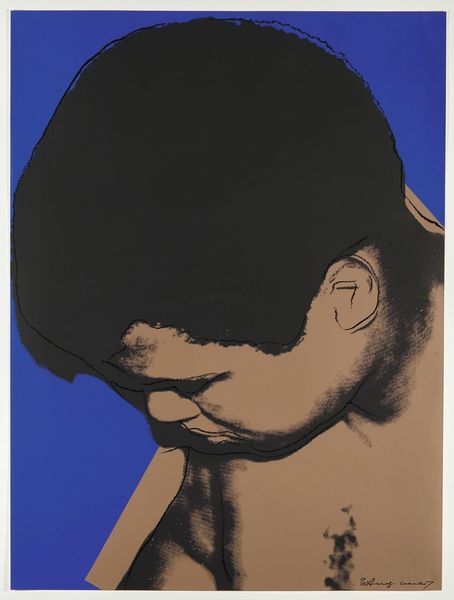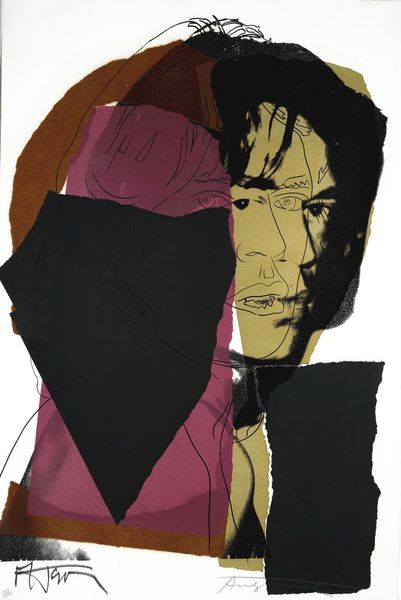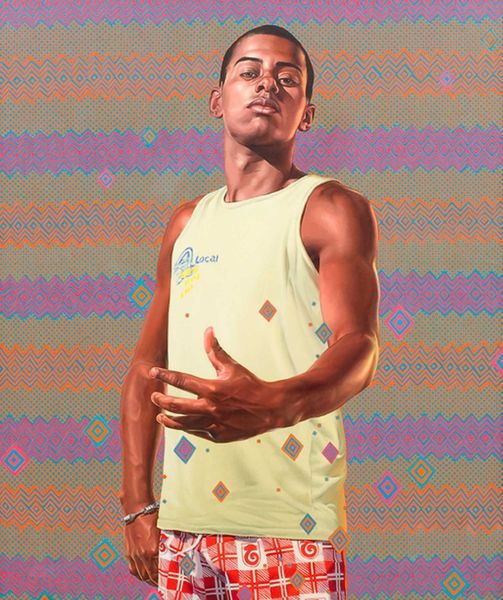
Copyright: Modern Artists: Artvee
Editor: So here we have Andy Warhol's "Muhammad Ali #4," a screenprint from 1978. The pose, with his fist under his chin, makes him seem more thoughtful than combative. It’s not quite what I expect from a portrait of a boxer. What's your interpretation? Curator: This image speaks volumes about representation, particularly of Black athletes in the late 70s. Warhol, through his pop art lens, elevates Ali to an almost mythological status, right? It makes you wonder if he's deliberately subverting traditional portrayals of masculinity and Black identity. He’s not just a boxer here; he's an icon. Editor: I hadn't considered the mythological aspect. Do you think Warhol’s use of bright, almost garish colors is part of that? Curator: Absolutely! The colours detach Ali from reality, placing him firmly in the realm of celebrity and popular culture. Think about the socio-political climate then, the ongoing struggle for racial equality. By portraying Ali in this way, Warhol might be critiquing the commodification of Black figures while also acknowledging their power. What does this tension evoke for you? Editor: It's interesting. I see how the image, through this tension, challenges the viewer to consider the complexities of fame and identity in a politically charged environment. It also forces you to wonder whether or not Warhol succeeds in his depiction. Curator: Exactly! And that ambiguity is powerful. It compels us to analyze not just the artwork but the broader forces at play shaping representation. It invites interrogation. Editor: This has really opened my eyes. I appreciate you contextualizing the work and the critical questions it provokes. Curator: My pleasure. Art should always challenge our perceptions and encourage meaningful dialogue.
Comments
No comments
Be the first to comment and join the conversation on the ultimate creative platform.
